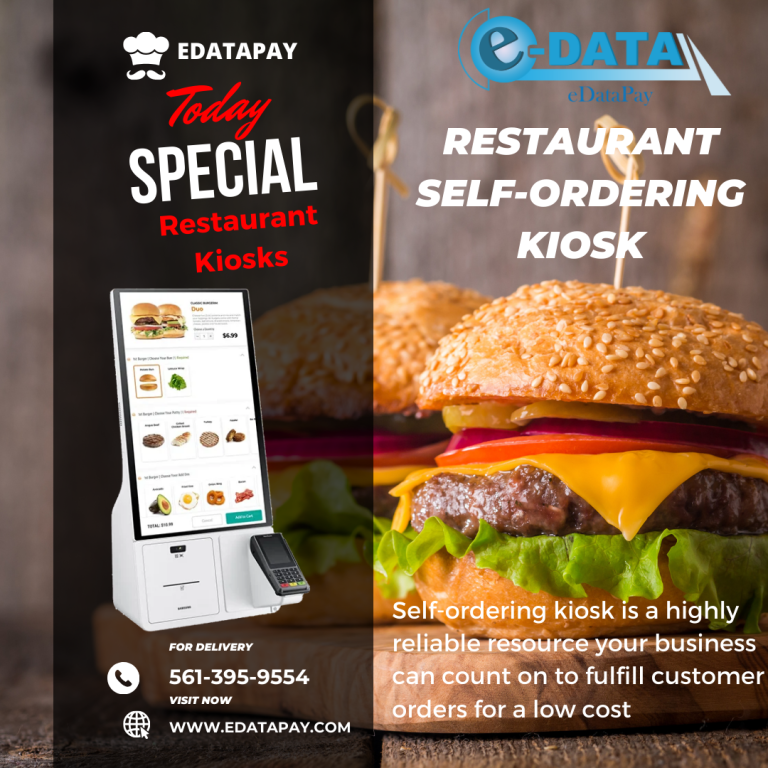SBA’s Guidance On The $28.6 Billion Restaurant Revitalization Grant Program

What Restaurants Need to Know Ahead of Its Anticipated Launch
This week the Small Business Administration (SBA) provided guidance on how the $28.6 billion Restaurant Revitalization Fundwill work. The Restaurant Revitalization Fund provides for qualified restaurants and other food establishments to obtain tax-free federal grants (Grants) of up to $10 million to replace the loss of revenues resulting from the pandemic. Unlike the SBA’s Paycheck Protection Program (PPP) in which applications were submitted to and processed by participating banks and other financial institutions, the Restaurant Revitalization Fund will be administered directly by the SBA.
Restaurants and other qualified food establishments anxiously await the rollout of the Restaurant Revitalization Fund amid estimates that the $28.6 billion will cover less than 25 percent of the more than $120 billion that would be required to award Grants to all qualified eating establishments. While we still do not know exactly when the SBA will begin accepting and processing Grant applications, there is consensus that the SBA will quickly deplete the entire $28.6 billion. We break down the new SBA guidance and suggest what restaurants and other qualified eating establishments should be doing to be able to quickly apply for a Grant once the Restaurant Revitalization Fund becomes live. This alert is based on the SBA’s guidance through April 21, 2021.
What Qualifies for a Grant
An “Eating Establishment” that has experienced a “Pandemic-Related Revenue Loss” but has not permanently closed will qualify for a Grant (an “Eligible Entity”).
Eating Establishments
An Eating Establishment is a business where the public or patrons assemble for the primary purpose of being served food and drink. The SBA has clarified that to establish this requirement, a business must have at least 33 percent of its 2019 “gross receipts” from “on-site sales” of food and drink. For a business that opened in 2020 or has not yet opened, it should have contemplated at least 33 percent of gross receipts in on-site sales to the public.
On-site sales means food and/or beverage purchased and consumed on the Grant applicant’s premises, purchased at the Grant applicant’s premises to go, purchased online or by phone and picked up from the Grant applicant’s premises or delivered directly to a consumer for use. These sales must be only to consumers, and no wholesale sales may be counted toward the 33 percent revenue number.
Gross receipts means all revenue in whatever form received or accrued, in accordance with the entity’s accounting method, from whatever source, including from the sales of products or services, interest, dividends, rents, royalties, fees, or commissions, reduced by returns and allowances but excluding net capital gains and losses. Gross receipts can be found on an applicant’s federal income tax returns.
The SBA also advised that caterers and bakeries may qualify as Eating Establishments. The list of businesses that can qualify as an Eating Establishment is now:
- Restaurants
- Food stands, food trucks, and food carts
- Caterers
- Bars, saloons, lounges, and taverns
- Licensed facilities or premises of an alcoholic beverage producer where the public may taste, sample, or purchase products
- Other similar places of business in which the public or patrons assemble for the primary purpose of being served food or drink
- Snack and nonalcoholic beverage bars
- Bakeries
- Brewpubs, tasting rooms, and taprooms
- Breweries and microbreweries
- Wineries and distilleries
- Inns
The following businesses must submit documentation with their Grant application to demonstrate (a) that their on-site sales to the public comprised at least 33 percent of “gross receipts” in 2019, or (b) in the case of businesses that opened in 2020 or that have not yet opened, that their original business model contemplated at least 33 percent of gross receipts in on-site sales to the public:
- Bakeries
- Brewpubs, tasting rooms, and taprooms
- Breweries and microbreweries
- Wineries and distilleries
An inn must provide documentation with its application to demonstrate that (a) its on-site sales of food and beverage to the public comprised at least 33 percent of gross receipts in 2019, or (b) in the case of an inn that opened in 2020 or that has not yet opened, that its original business model contemplated at least 33 percent of gross receipts in on-site food and beverage sales to the public.
All other businesses, including restaurants, bars, and food carts, are presumed to have satisfied the on-site sales comprising 33 percent of gross receipts test; however, any such applicant should assemble and maintain evidence to support that calculation because on the application the Grant applicant will be certifying that it is eligible to receive the Grant award “under the rules in effect at the time this application is submitted.”
In addition, the applicant must have its own employer identification number, tax identification number, or Social Security number in the case of a sole proprietorship.
Disqualifying Circumstances
An Eating Establishment otherwise qualified for a Grant is not eligible to apply for or receive a Grant if it:
- As of March 13, 2020, owned or operated (together with its affiliated business) more than 20 locations regardless of whether those locations do business under the same or multiple names. “Affiliated business” means a business in which the Eating Establishment has an equity or right to profit distribution of 50 percent or more or has the contractual right to control the business, determined as of March 13, 2020. Surprisingly, the SBA did not provide additional guidance on the meaning of an “affiliate” so that the analysis will take into account only the Eating Establishment and any business it possesses control over or holds a majority interest in.
- Has a pending application for or has received a grant under the Shuttered Venue Operators Grant program established by the Economic Aid to Hard-Hit Small Businesses, Nonprofits, and Venues Act.
- Is a publicly traded company, nonprofit organization, or a state or local government-operated business.
Pandemic-Related Revenue Loss
Eating Establishments are eligible for a Grant only if they have incurred a “Pandemic-Related Revenue Loss.” A Pandemic-Related Revenue Loss is the amount by which the gross receipts for calendar year 2019 exceed gross receipts for calendar year 2020, but if
- An Eating Establishment was not in operation (generating sales) for the entire 2019 year, then the Pandemic-Related Revenue Loss is the difference between (i) the product of the average monthly gross receipts of the Eligible Entity in 2019 multiplied by 12 and (ii) the product of the average monthly gross receipts of the Eligible Entity in 2020 multiplied by 12. The SBA will allow an Eating Establishment not in operation for the entire 2019 year to choose between this formula or the formula immediately below and base its Pandemic-Related Revenue Loss on its “Payroll Costs” (which has the same meaning as used for PPP) as if it had opened in 2020.
- An Eating Establishment opened during the period beginning on January 1, 2020, and ending on March 10, 2021, then the Pandemic-Related Revenue Loss is the amount of its Payroll Costs incurred minus any gross receipts received.
- An Eating Establishment that is not yet in operation as of the date of its Grant application but has incurred expenses for which Grant proceeds may be used (“Eligible Expenses”), then the Pandemic-Related Revenue Loss is incurred Eligible Expenses.
How Is the Amount of the Grant Calculated?
The Grant amount will be the amount of the Pandemic-Related Revenue Loss reduced by the amount of any PPP loans, SBA Economic Injury Disaster Loan, and state and local grants, including those through the CARES Act.
The aggregate Grant amount to an Eligible Entity and its affiliated businesses may not exceed $5 million per location and $10 million in the aggregate. For these purposes, each location at which there is a fixed permanent structure at which sales are made constitutes a single location. However, a caterer that generates sales at nonpermanent structures, such as food stands, trucks, or carts, is considered to have one physical location where the business is headquartered. Accordingly, an Eligible Entity with five food trucks and 11 food carts has a single location.
What Can the Grant Be Used For?
The Grant award can be used for the following qualified expenses incurred during the period of February 15, 2020 through the earlier of March 11, 2023, or the date on which the business permanently closes (the “Covered Period”):
- Business Payroll Costs (as defined in PPP), which include sick leave and costs related to the continuation of group health care, life, disability, vision, or dental insurance benefits during periods of paid sick, medical, or family leave, and group health care, life, disability, vision, or dental insurance premiums
- Payments on any business mortgage obligation (both principal and interest but not prepayments thereon)
- Business rent payments, including rent under a lease agreement (but not prepayments thereon)
- Business debt service (both principal and interest but not prepayments thereon)
- Business utility payments for the distribution of electricity, gas, water, telephone, Internet access, or any other utility that is used in the ordinary course of business for which service began before March 11, 2021
- Business maintenance expenses including maintenance of walls, floors, deck surfaces, furniture, fixtures, and equipment
- Construction of outdoor seating
- Business supplies, including personal protective equipment and cleaning materials
- Business food and beverage expenses, including raw materials for beer, wine, or spirits
- Covered Supplier Costs, which is an expenditure made by the Eligible Entity to a supplier (1)(a) for the supply of goods that are essential to the operations of the entity at the time at which the expenditure is made and (b) that is made pursuant to a contract, order, or purchase order in effect at any time before the receipt of the Grant award; or (2) with respect to perishable goods, a contract, order, or purchase order in effect before or at any time during the Covered Period
- Business operating expenses, which are business expenses incurred through normal business operations that are necessary and mandatory for the business (e.g., rent, equipment, supplies, inventory, accounting, training, legal, marketing, insurance, licenses, fees)
All Grantrecipients have until March 11, 2023, to spend the Grant proceeds on Eligible Expenses. Grant recipients will be required to report to the SBA at the end of each year how it has used the funds to date by Eligible Expenses categories. The SBA may request supplemental documentation to validate the use of the funds.
Restaurant Revitalization Fund Lending Set-Asides and Priorities
To ensure that the smallest businesses receive Grants, the SBA has set aside funds that are available only for certain applicants, as follows:
- $5 billion for applicants with 2019 gross receipts of not more than $500,000
- $4 billion for applicants with 2019 gross receipts from $500,001 to $1,500,000
- $500 million for applicants with 2019 gross receipts of not more than $50,000
The SBA will prioritize awarding funds to “small business concerns”[1] that are at least 51 percent owned and controlled by individuals who are (i) women, (ii) veterans, and/or (iii) socially and economically disadvantaged (Black Americans, Hispanic Americans, Native Americans including Alaska Natives and Native Hawaiians, Asian Pacific Americans, and Subcontinent Asian Americans) (collectively, “Prioritized Groups”). While the SBA will accept all applications once the Restaurant Revitalization Fund becomes live, during the initial 21-day period, Grants will be awarded only to Eligible Entities owned and controlled by Prioritized Groups, for which it will rely on applicants’ self-certification.
The Grant Application
A sample of the Restaurant Revitalization Fund application can be found here.
The application requires that the applicant certify, among other things, that:
- Its business has not permanently closed.
- Current economic uncertainty makes this funding request necessary to support the ongoing or anticipated operations of the applicant.
- The applicant, together with its affiliates, does not own or operate more than 20 locations, regardless of whether those locations do business under the same or different names.
- The applicant has not applied for or received a Shuttered Venue Operators Grant from the SBA.
- The applicant is not a publicly traded company.
- The applicant is eligible to receive funding under the rules in effect at the time this application is submitted.
- The applicant is not engaged in any activity that is illegal under federal, state, or local law.
- To the extent feasible, the applicant will purchase only American-made equipment and products.
The application requires the name, address, and tax identification number of any 20 percent owner or of owners that collectively own 20 percent of the applicant.
In addition, an applicant must submit the following with its application:
- Documentation to support the calculation of the Pandemic-Related Revenue Loss. Gross receipts can be documented by (i) business tax returns (IRS Form 1120 or IRS Form 1120-S), (ii) IRS Form 1040 Schedule C, (iii) IRS Form 1040 Schedule F, (iv) IRS Form 1065 (including K-1s), (v) bank statements, (vi) externally or internally prepared financial statements such as income statements or profit and loss statements, (vii) point of sale reports, including IRS Form 1099-K.
- IRS Form 4506-T: Verification for Tax Information.
- If the applicant is a brewpub, tasting room, taproom, brewery, winery, distillery, bakery, or inn, documentation evidencing that on-site sales of food and beverages to the public comprise at least 33 percent of gross receipts for 2019, which may include 2019 Alcohol and Tobacco Tax Trade Bureau (TTB) forms filed; state or local government forms filed; internally created reports from inventory management, sales reporting, or accounting software; or other internally created revenue or accounting reports.
How to Apply for a Grant?
An Eligible Entity can apply for a Grant:
- Through a recognized SBA RestaurantPartner
The SBA is developing partnerships with recognized technology companies that provide software, hardware, and payments services to the restaurant industry to help ensure wide and equitable distribution of relief. These are referred to as SBA’s Point-of-Sale (POS) Restaurant Partners, one of which is Square. Find out the latest information about SBA Restaurant Partners here.
- Through the SBA directly at restaurants.sba.gov
- As a last resort, telephonically at 844.279.8898
Steps to Take Now
- Sign up here to receive email alerts from the SBA as additional information about the Restaurant Revitalization Fund becomes available.
- Regularly check the SBA website for updates here.
- Determine whether at least 33 percent of your 2019 gross receipts were from on-site sales of food and drink and document the same.
- Determine whether your business qualifies for set-asides or priority treatment and document the same.
- Monitor the latest information about SBA Restaurant Partners here and see whether you can utilize their services to expedite the filing of your application.
- Complete a draft of the Restaurant Revitalization Fund application sample.
- Review the Restaurant Revitalization Fund guide here.
[1] A “small business concern” (i) is a business entity organized for profit, (ii) operates primarily in the United States, and (iii) is considered small in accordance with SBA’s size standards in the North American Industry Classification System (NAICS). For most Eating Establishments to qualify as a small business concern, annual receipts must not exceed $8 million, except in the case of limited-service restaurants or cafeterias and buffets, where annual receipts must not exceed $12 million and $30 million, respectively.









